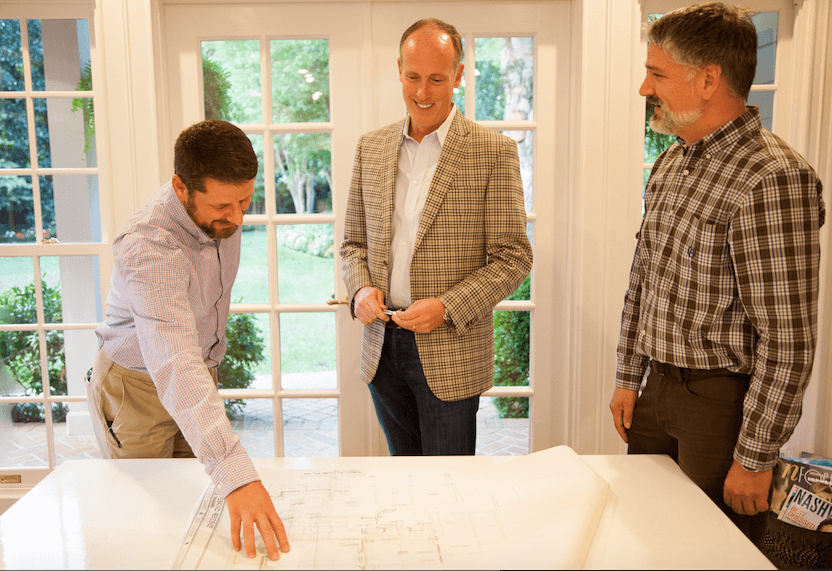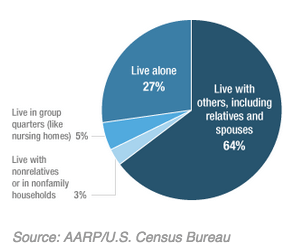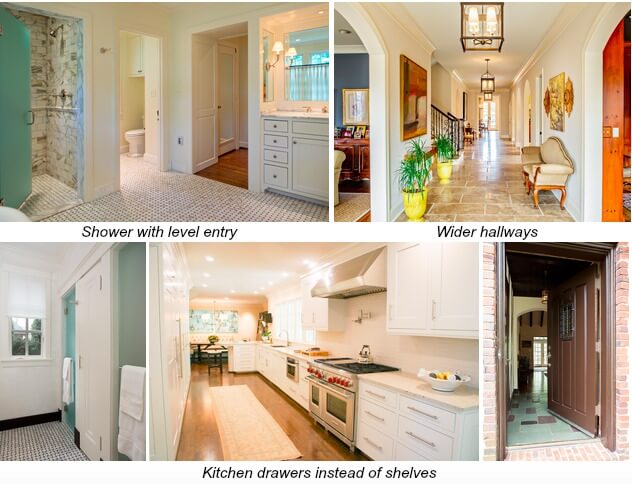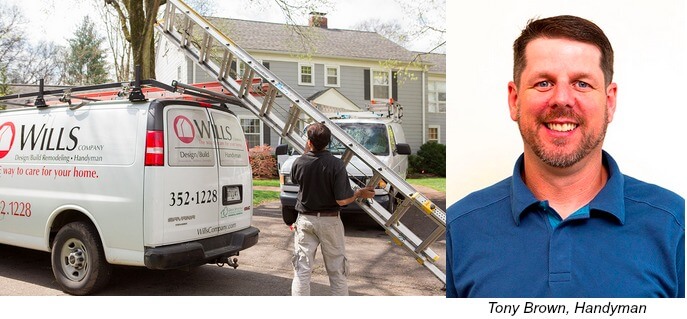The number of seniors in the United States will more than double in the next few decades, and the overwhelming majority want to remain in their own homes. Nine out of 10 seniors actually stay where they are when they retire, according to AARP. After all, it’s hard to replace the intangibles such as long-time neighbors, beloved streets and cherished memories associated with a family home. Another compelling reason? Staying put can often be the best economic choice.
Did you know? Only 5 percent of Americans ages 65 and older live in group quarters like nursing homes. In recent years, this share has been steadily declining (based on 2008 American Community Survey data).
With 78 million baby boomers about to hit retirement age, some say the time is ripe to overhaul the way homes are designed and maintained.
Design
It isn’t necessary to wait for the gold pen at the retirement party. Modifying homes for aging in place (sometimes referred to as “Universal Design”) makes sense for all stages of our busy lives. Some elements of smart Universal Design include:
- Wider hallways
- Towel racks that double as grab bars
- Audible and visual strobe light system to indicate when the doorbell, telephone, or smoke or carbon monoxide detectors have been activated
- Temperature Activated Flow Reducers to prevent burns from too hot showers and faucets
- Safe-T-element cooking systems installed over existing stovetop burners
- A water faucet over the stove to fill large pots
- Kitchen shelves that pull out like drawers
- Exterior doors that are larger with no steps (which is great for a stroller as well as a wheelchair)
- Showers with a smooth entry (which are all the rage with interior designers)
- Door handles that are levers rather than knobs (perfect for small child hands)
- High-tech remote “telecare” video monitors.
- Modified and simplified furniture placement
- Slip-proof floors
“These design options just make sense for so many phases in a family’s life” says Tony Brown, Director of Handyman Operations for the Wills Company. “You make a plan when you have a baby or when you go off to college or get married. Doesn’t it make sense to make a plan for when you get older?”
TOOLS for Aging in Place
Maintain
Most baby boomers consider their homes to be one of their largest financial assets. However, if not vigilantly maintained, a house can begin to become more of a liability. As we age, we may not notice or remember to have the gutters cleaned or paint our houses as needed. Before you know it, a relatively small repair balloons into a major problem. Out-of-town children may arrive for the holidays and be shocked to see “home” in need of an overwhelming rehab. Complicating matters, it is very hard to manage a project successfully from afar if you don’t have an established relationship with service providers you can trust.

Ridley’s design team hard at work with “Universal Design” implementation
The Wills Company is often called upon by families with aging parents who want and hope to stay on their own homes. Proper planning and the engagement of a maintenance program can prevent costly, ugly surprises that are avoidable. The Wills Company Handyman can be relied upon to diagnose the situation and develop a design and maintenance plan to ease this process.
Resources and References:




